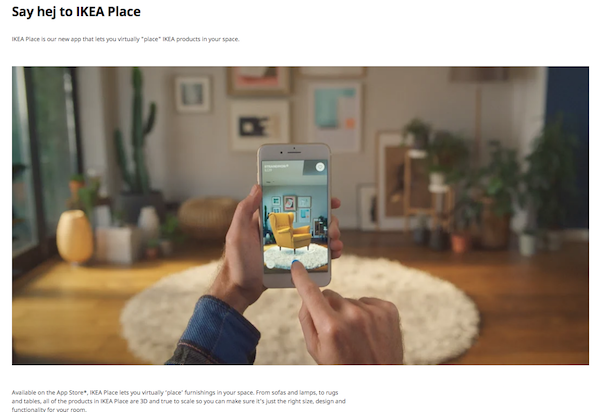
A Complete Guide To Using Business Credit to Buy Real Estate
If you need to buy commercial real estate, it is probably best to do with business credit rather than a personal loan. Of course, if you can buy real estate with any loan at all, that’s even better. But how would you do that? How do you go about using business credit to buy real estate? What is business credit exactly? These are all questions that you need answered.
The Ins and Outs of Using Business Credit to Buy Real Estate
To put it simply, business credit is credit you get based on the creditworthiness, or fundability, of your business, no you the owner.
Find out why so many companies use our proven methods to get business loans.
So, what are the options for funding real estate? There are a few! If you are using business credit to buy real estate, you can do a commercial loan or hard money loan. If you want to try to reduce the amount of debt you have to take on, you can try crowdfunding a well. You may get all you need, but you may need to combine funding methods.
Real Estate Crowdfunding
Crowdfunding real estate is not all that different from crowdfunding anything else. You use a crowdfunding platform, and others on the platform can donate, or invest, in your cause as they see fit. It began the JOBS Act of 2012. Small businesses gained relief from a lot of requirements in place by the SEC. These requirements held many businesses back.
Though similar to crowdfunding for small businesses, crowdfunding real estate investing isn’t exactly the same. Most of those that list on real estate crowdfunding sites are commercial real estate businesses. They are seeking funding for their endeavors. Anyone can invest in commercial real estate. This is similar to investing in the stock market. Then they can enjoy the returns without actually buying an entire piece of commercial property.
As a result, commercial real estate investors can raise equity and avoid a loan. At the same time, individuals can enjoy the benefits of commercial real estate investing for as little as $500.
Benefits of Equity Crowdfunding for Real Estate Investors
First, you can raise funds without debt. This is the same reason crowdfunding is a popular way to fund a small business startup. It isn’t free money. There are fees and profit sharing involved. It is often substantially cheaper than borrowing the funds, however.
Real Estate Financing Using Hard Money
If you struggle with bad credit, hard money loans are an option. The loans are asset-based. They can fund any real estate investment. They are based on the property value. This means, there is no need for background checks or credit scores. Some lenders even offer hard money loans based on the after-repair value of a building.
Since it’s based on the real estate value , a borrower with poor credit can get these loans. Hard money loans are fast, sometimes even within 24 hours of application.
Interest rates can be very high, some even up to as much three times that of banks. Terms can be very short, like 6 – 18 months, versus a standard 30-year mortgage.
Plus, a hard money lender wants you to have some money in the project as well. Typically at least 10% of your own money is required. That way, the lender knows their interests are protected because you don’t want to lose your money. Hard money loans are usually not subject to consumer lending regulations.
Commercial Real Estate Loans
Commercial real estate is income-producing property that is solely for business purposes, not residential. Examples include retail malls, professional offices such as for medical professionals, office buildings and complexes, and auto dealerships. Financing, including the purchase, development, and construction of these properties, often comes from commercial real estate loans. These are mortgages secured by liens on the commercial property.
Commercial real estate loans are often made to business entities. These include developers, corporations, limited partnerships, and funds and trusts. These entities are sometimes formed for the specific purpose of owning commercial real estate.
Find out why so many companies use our proven methods to get business loans.
However, such a business entity may not have a financial track record or any credit rating. In that case the lender may require the principals or owners of the entity to guarantee the loan.
The owner then puts their property on the line. In case of loan default, the lender can recover from them.
If the lender does not require this type of guarantee, and the property is the only means of recovery in the event of loan default, this debt is a non-recourse loan. It means the lender has no recourse against anyone or anything other than the property.
What are Typical Commercial Loan Terms for Real Estate?
Using business credit to buy real estate usually means shorter loan terms. Usually, they range from less than 5 years to 20 years rather than the typical 30 year residential mortgage. The amortization period is often longer than the term of the loan.
Amortization is an accounting technique. Its use is to periodically lower the book value of a loan or intangible asset over a set period of time.
For example, a lender might make a commercial loan for a term of eight years, with an amortization period of 30 years. Then, the borrower would make payments for eight years, of an amount based on the loan being paid off over 30 years.
Then one final balloon payment of the entire remaining balance on the loan is due at the 8 year mark.
The length of the loan term and the amortization period affect the rate the lender charges. Depending on the credit strength of the borrower, these terms may be negotiable. However, general, the longer the loan repayment schedule, the higher the interest rate.
Credit Suite Options for Funding Real Estate Investments
These options are all viable, but some work better than others. It can be hard to determine what will work best for you.
Credit Suite has commercial real estate financing that you should check out. It ranges from $100,000 – $10,000,000. This financing can be used for refinancing a property, even if you are doing a cash-out refinance. The maximum LTV 70% and loan-to-values range from 55 – 65%, depending on the purpose of the loan. Renovations get loan-to-value of up to 60%. Credit Suite has funding programs available including:
- conventional property financing
- money for investment properties and hard money loans
- bridge loans and
- loans for the purchase of commercial real estate
Credit Suite offers financing for various, and even unique, property types. You can get funding for offices, industrial offices, industrial facilities, light manufacturing buildings, self-storage facilities, mixed use properties, commercial condos, auto dealerships, light auto services, day cares, assisted living facilities, entertainment venues, multi-family properties, retail warehouses, and more.
Find out why so many companies use our proven methods to get business loans.
How a Business Credit Expert Can Help
If you plan on using business credit to buy real estate, you can do so even if your personal credit score isn’t great. However, you may get better terms and interest rates if you have a strong business credit score also. A business credit expert can help you evaluate your fundability and guide you as you navigate the process of increasing fundability and building a strong business credit score.
The post A Complete Guide To Using Business Credit to Buy Real Estate appeared first on Credit Suite.






